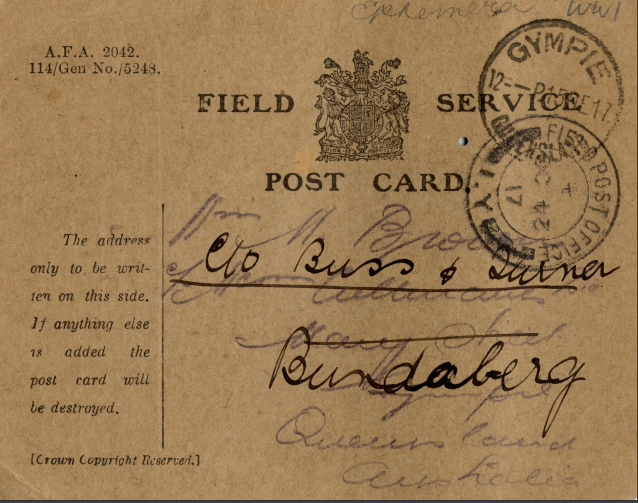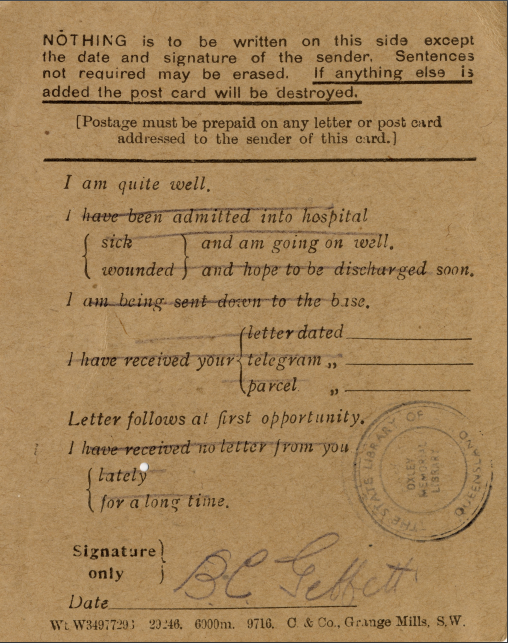Guest Blogger: Mark Cryle, 2016-17 Q ANZAC 100: memories for a new generation Fellow

Field service postcard - front, record #21128636310002061, John Oxley Library, SLQ
Among the artefacts commonly found in collections of correspondence from World War 1 veterans is the Field Service Postcard. They constituted a significant percentage of the vast correspondence that travelled between the battle front and the home front during the war years.

Field service post card - back, record #21128636310002061, John Oxley Library, SLQ
In essence, they told the recipient that the correspondent was, at the time of writing, alive … and not much else. They were not unique to Australia or Britain and similar versions of the document were used by the French, German and Austro-Hungarian armies. Indeed the latter featured nine different languages to allow for the polyglot nature of the Austrian forces.
This card was sent in October 1917 by Private Bernard Cowell Gebbett, who, like many Queenslanders, was part of the 49th Battalion fighting in Europe.
After having fought in the battles of Messines and Polygon Wood, the battalion was, at the time of writing, stationed near Steenvorde in northern France and still under heavy German artillery bombardment. Of course, none of this information could be conveyed in Gebbett’s correspondence.
Instead the card’s message was impersonal and perfunctory at best. We have no insight’s here into Private Gebbett’s circumstances – least of all his state of mind. In many ways the document encapsulates the silences which were maintained around battlefield trauma.
Yet Field Service Postcards served an important purpose in that they expedited the bureaucratic process and were a relatively fast form of communication because they obviated the need for censorship. Moreover, troops were encouraged to use them by making them free of charge. Nor did they necessarily displace letters or other forms of correspondence. Indeed the text of the card, as can be seen, precisely addresses that issue.
How reassuring they were to their recipients is hard to gauge, as they were often completed by men on the eve of battle. However meagre the information they provided, they remained, nonetheless, treasured relics and were often archived with other correspondence by loved ones at home.
For the record, Bernard Cowell Gebbett survived the war and returned to Queensland in 1919. He later pursued a career in the National Bank.
Sources:
AWM4, Australian Imperial Force Unit War Diaries, 1914-1918 War, 13th Infantry Brigade, October 1917. https://www.awm.gov.au/images/collection/bundled/RCDIG1004599.pdf
Barrett, Michele, and Peter Stallybrass. 2013. "Printing, Writing and a Family Archive: Recording the First World War." History Workshop Journal 75 (1):1-32.
Fussell, Paul. 2000. The Great War and Modern Memory. New York: Oxford University Press.
Mark Cryle
Comments
Your email address will not be published.
We welcome relevant, respectful comments.